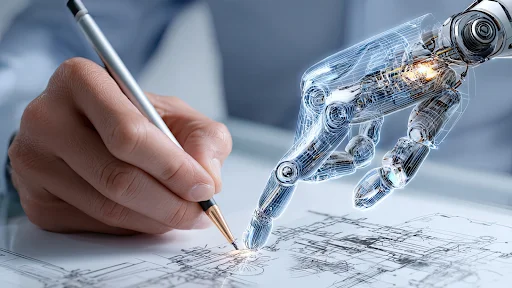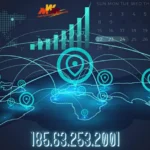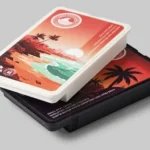Here’s something nobody tells you in med school: documentation will steal more of your time than anything else you do. Seriously. If your days feel like they’re spent staring at a screen instead of actually connecting with patients, welcome to the club, you’ve got plenty of company. Get this: Physicians clock roughly 5.8 hours per eight-hour patient care shift just wrestling with electronic health records.
Yeah, that’s almost three-quarters of your entire workday vanishing into administrative quicksand. But here’s where things get interesting. A SOAP note generator powered by AI is actually starting to deliver on those promises we’ve heard for years, giving you real hours back in your day. Let’s dig into how these tools are shaking up clinical documentation.
Discover insights tailored for you — dive into our related stories and tips now!
The Documentation Time Crisis in Modern Healthcare
Look, the paperwork problem hasn’t just gotten worse, it’s become genuinely unsustainable. You need to understand just how bad things have gotten to appreciate why AI-based solutions have shifted from “nice to have” to “necessary.”
Breaking Down the Daily Hours
Most doctors don’t realize the true scope of time documentation devours. Think about it. Every single patient encounter eats up somewhere between 10 and 15 minutes of pure note-taking. You’re seeing 20 to 30 patients each day? Do the math, that’s 3 to 7 hours dedicated solely to basic documentation.
And we’re not even talking about chart reviews yet. Or documenting lab results. Or those referral letters that pile up. A lot of physicians end up burning another 2 to 3 hours after their shift wraps just playing catch-up. Weekends? Forget about them. They disappear into documentation black holes.
Impact on Patient Care Quality
When part of your brain is busy mentally drafting notes during an appointment, you’re simply not fully there. Your eye contact drops. You miss subtle conversational signals that matter. Patients absolutely pick up on it when you’re more focused on the computer than on them.
This damages satisfaction scores, sure, but more critically, it erodes that therapeutic relationship at the heart of effective medicine. SOAP note generator technology tackles this head-on by taking documentation off your plate so you can be completely present with your patient.
The Burnout Connection
Documentation overload consistently ranks among the biggest drivers of physician burnout. Those after-hours charting marathons. Weekend catch-up sessions that never end. That perpetual feeling of drowning in unfinished notes. This stuff takes a genuine psychological toll.
Tons of physicians say the same thing: if they could just get their documentation time back, their entire relationship with their career would transform. That’s not a minor improvement, we’re talking about the difference between practicing medicine sustainably for decades versus counting down the days until early retirement.
Understanding AI-Powered Documentation Technology
Modern documentation platforms represent an actual breakthrough, not just some incremental upgrade. These systems deploy sophisticated technology that genuinely comprehends medical conversations.
Voice Recognition That Actually Works
Today’s tech bears zero resemblance to those clunky early voice recognition systems. For instance, a SOAP note generator like Freed AI captures conversations with 95-98% accuracy and recognizes more than 27,000 medical terms spanning multiple specialties.
It handles medical jargon, complicated drug names, and specialty-specific terminology without needing constant corrections. You speak naturally during patient visits without dumbing down your language for the software.
Clinical Intelligence Features
These aren’t glorified transcription services. SOAP note generator tools with real AI understand context and clinical relevance. The system picks out subjective complaints, identifies objective findings, follows assessment reasoning, and organizes treatment plans.
It structures everything appropriately, proposes relevant billing codes, and cross-checks against patient history. This contextual awareness means you receive actual clinical notes ready for review, not raw transcripts requiring massive editing.
Learning Your Documentation Style
Here’s what really impresses me: personalization. The platform learns your individual documentation patterns over time. Got specific elements you always include in certain scenarios? It starts adding those automatically.
Your templates genuinely become yours. And this customization happens passively, the AI simply picks up your patterns through regular use without requiring extra work from you.
Real-Time Savings Across Specialties
The data paints a pretty compelling picture. Physicians using SOAP note generator technology report massive time recovery regardless of specialty.
Minutes Per Note Reduction
Manual documentation usually consumes 10-14 minutes per patient encounter. With AI handling the heavy lifting, you’re down to 1-2 minutes for review and sign-off. That’s an 85-90% reduction in documentation time per patient.
Let’s say you see 25 patients daily, you’ve just reclaimed roughly 3-4 hours. Those aren’t abstract hours, either. They translate to seeing additional patients, leaving work on schedule, or, radical concept, actually taking a lunch break.
Eliminating After-Hours Charting
The quality-of-life boost physicians rave about most? Killing after-hours documentation entirely. When notes generate automatically during encounters, you’re not staring down hours of charting after your last appointment. No staying late.
No weekend documentation marathons. Research shows AI documentation platforms reduce after-hours charting by 70-80%. You finish with your final patient, and, imagine this, you’re actually done for the day.
Increased Patient Volume Without Burnout
Interestingly enough, tons of practices report seeing 3-5 extra patients daily without feeling rushed or overwhelmed. When documentation stops competing for your attention during appointments, visits feel more relaxed despite increased volume. The time savings unlock capacity that simply didn’t exist before.
Critical Features That Maximize Time Savings
Not all documentation tools are created equal. Specific features separate modest improvement from genuine practice transformation.
Ambient Recording Capabilities
The best platforms record conversations without requiring any action from you whatsoever. No clicking buttons. No special equipment. Your phone or tablet captures everything naturally. Multi-speaker recognition differentiates between you, your patient, and any family members present. This hands-free operation creates zero workflow disruption, you interact with patients exactly as you normally would.
Smart Template Integration
Specialty-specific templates save enormous amounts of time. A cardiology follow-up looks nothing like a pediatric well-visit, right? Quality systems ship with pre-built templates for common encounters across all major specialties, automatically pulling relevant prior visit data, recent lab work, and current medications. You’re never starting from a blank page.
Implementation Without Disruption
Worries about steep learning curves and implementation nightmares keep some doctors from trying new technology. Modern AI documentation tools were built specifically to address these legitimate concerns.
Getting Started Quickly
Most physicians become comfortable within 15–30 minutes of training. You don’t need IT support or complex setup procedures. Download the app, run through a quick tutorial, and start recording encounters. Many doctors report feeling confident by patient number two or three. The technology molds itself to your workflow rather than forcing you to change how you practice.
Team-Wide Benefits
While individual physicians see direct benefits, entire practices experience improvements. Front desk staff field fewer documentation-related interruptions. Billing teams receive complete, timely notes that support proper coding without constant clarification requests. Nurses access current information without hunting through half-finished charts. These cascading effects multiply overall efficiency gains throughout your practice.
Measuring Your Return on Investment
Time savings convert directly into financial returns. Understanding this calculation helps justify subscription costs. Before implementation, time yourself for one full week. How much time does documentation actually consume? After adopting AI tools, track again after 30 days. Most physicians discover they’ve recovered 2–4 hours per day.
Not everything valuable appears in revenue spreadsheets. Better work-life balance. Reduced burnout. Improved patient interactions. These benefits matter tremendously, even though they resist easy quantification. Tons of physicians report that reclaiming evening and weekend hours has completely transformed their relationship with practicing medicine.
Final Thoughts on Reclaiming Your Time
The documentation burden doesn’t need to define your practice experience anymore. Today’s SOAP note generator technology has matured enough to deliver genuine, measurable time savings without sacrificing quality. Physicians across all specialties are recovering 2–4 hours daily, time they’re reinvesting in patient care, professional development, or simply heading home at a reasonable hour.
The technology works. Implementation is straightforward. Return on investment is crystal clear. If documentation has morphed into the worst part of your workday, exploring AI solutions isn’t really optional anymore, it’s essential for building a sustainable practice that doesn’t burn you out.
Common Questions About AI Documentation Tools
1. How accurate are AI-generated notes compared to manual documentation?
Leading AI documentation systems hit 95-98% accuracy for medical terminology and clinical context. That’s actually higher than manual documentation, which suffers from fatigue-related mistakes and end-of-day mental fog. You’ll still review every note, you’re ultimately responsible, but you’re catching minor issues rather than generating content from scratch. Most physicians find AI notes need barely any editing.
3. Does using AI for clinical notes create any legal or compliance issues?
AI-generated notes are legally defensible when properly reviewed and signed by the physician. You remain ultimately responsible for documentation accuracy, the same as with manual notes. Choose HIPAA-compliant platforms using hospital-grade encryption. The audit trail showing AI assistance plus physician review actually strengthens documentation from a legal perspective.
Don’t miss out! Check our featured posts packed with expert advice and fresh ideas.






